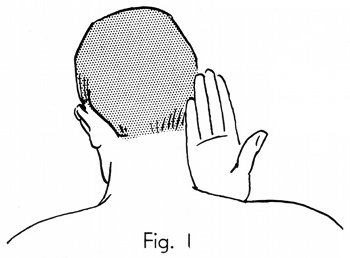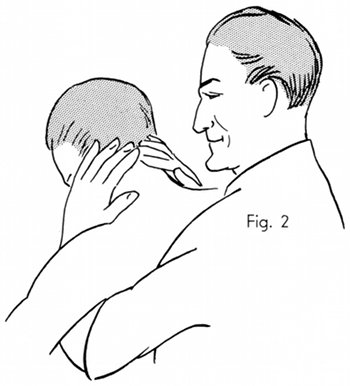|
Index of Transcribed Charts
Supplemental Essays
Contact Us
Acknowledgements
"Bumper Sticker" Quotes
Support DigitalDrStone!This site is a free service for Polarity Therapy practitioners, students and teachers, with the intention of expanding Polarity Therapy by making it more accessible. It is owned and operated by a non-profit organization, EnergySchool Foundation, with the support and permission of numerous other individuals and corporations as described in the Acknowledgements section. Please consider making a tax-deductible donation to support our continued presence by using this Paypal button to send a contribution.
Winner of the APTA "Outstanding Service Award" 2012
|
Polarity Therapy Volume 1, Book 2
Chart No. 50 - Successive Moves of a New Upper Dorsal [Thoracic] Lift for Anteriority and Relaxation When Indicated.
|
Countryside Technique
|

The preliminary contact where the wrist fits right in over the clavicle.
|

Fig. 2. The hands are for contact on the occiput. Note how the thumb fits close to the shoulder, and the arm is firmly placed under the armpit nearest to the body. No space for strained leverage is given. The bend of the head forward is determined by the degree of anteriority in the upper dorsal [thoracic] region and the amount of flexion possible without strain.
|

Fig. 3. The anterior view of the hold, ready for the lift, which is against the chest of the operator. The bend of the head must bring the dorsal [thoracic] anteriority posterior, and at this point, the fulcrum of the chest is applied in a gentle lift.
Test the position first. If it hurts at all, no lift must be given, for there is no lower dorsal-lumbar [thoracolumbar] compensation. A correction now would result in spastic muscles which cannot compensate.
|
|
Book 2, Chart 49 ~ Book 2, Chart 51
|
|
|
American Polarity Therapy Association
Copyright 2012 EnergySchool Foundation
Text & images from Randolph Stone, Polarity Therapy Vol. I & Vol. II, CRCS PO Box 1460, Sebastopol, CA 95473
Thanks to the American Polarity Therapy Association and CRCS Publications for supporting this project.
|